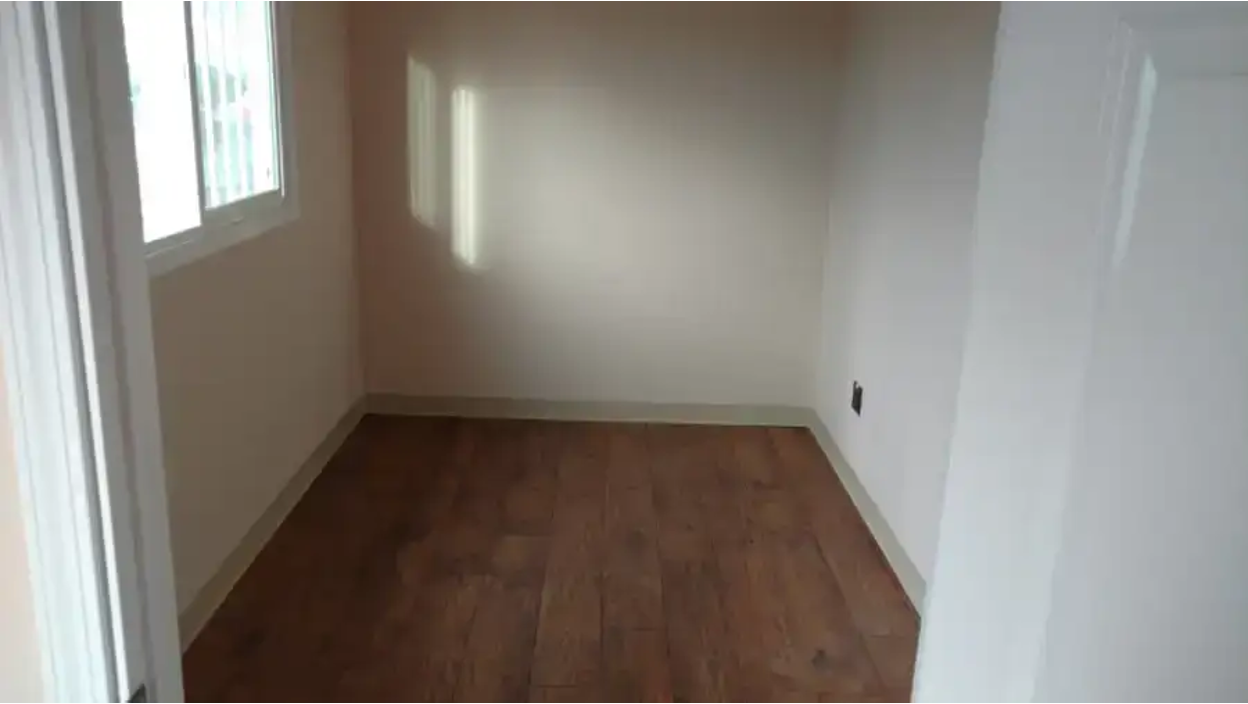The Reason Behind Wooden Floors In Shipping Containers
Get a quoteWhy Shipping Containers Have Wooden Floors
Key Takeaways
- Wooden floors in shipping containers provide excellent durability and strength.
- These floors are cost-effective, often using affordable and sustainable materials like plywood made from tropical hardwoods.
- Wooden flooring provides natural thermal insulation, helping to regulate temperatures inside the container.
- Conexwest’s fabrication service helps you install various types of shipping container flooring.
Why Shipping Containers Have Wooden Floors
1. Durability and Strength
Wooden floors, often made from high-quality plywood derived from tropical hardwoods like Keruing or Apitong, are engineered to withstand significant loads and harsh conditions. This durability is important for the safe transport of heavy cargo, as the flooring must endure constant wear and tear during transit.
2. Lightweight Nature
Compared to other flooring materials such as steel, wood is relatively lightweight, which can help reduce overall shipping costs. A lighter container allows for more cargo to be transported within weight limits.
3. Ease of Maintenance
Wooden floors are generally easier to maintain than some other materials. They require simple cleaning and occasional protective treatments to keep them in good condition.
4. Cost-Effectiveness
Using plywood or bamboo for flooring is often more cost-effective than alternatives like steel or composite materials. The affordability of these natural materials makes them accessible while still providing adequate performance under demanding conditions.
5. Environmental Considerations
Bamboo, in particular, is an eco-friendly option that is renewable and biodegradable. Thus, its rapid growth rate makes it a sustainable choice for flooring in shipping containers.
6. Versatility for Modifications
The wooden floor allows for easy modifications, such as installing shelving or securing equipment directly to the floor. This versatility makes it ideal for various applications beyond traditional shipping, including conversions into offices or living spaces.
Conexwest, a leader in shipping and storage solutions based in Northern California, offers new, used, and refurbished containers from 10ft to 45ft, with fast delivery within 3–7 days and container fabrication options like adding shelves and locks. We serve over 10,000 customers nationwide, including prestigious clients like the U.S. Navy and Google. As an ISO 9001 and AWS-certified company, we ensure top quality and competitive pricing. |
Common Issues With Wooden Floors For Shipping Containers

Wooden floors look elegant but are more susceptible to damage.
1. Moisture and Water Damage
Wooden floors are susceptible to moisture, which can lead to rot and decay. Shipping containers often face exposure to rain and humidity, especially when stored in open yards. Prolonged moisture contact can seep into the wood and compromise its structural integrity.
2. Pest Infestation
Wood is naturally attractive to pests such as termites and other wood-boring insects. These infestations can weaken the floorboards, leading to structural damage that compromises the container's usability. While treatments are available, the effectiveness can vary, and untreated wood may pose a risk of pest-related damage.
3. Chemical Spills
Containers frequently transport various goods, including chemicals that can spill during transit. Such spills can severely damage wooden floors by weakening the wood fibers and leading to delamination or other forms of deterioration. Immediate cleanup is essential to mitigate these effects.
Pro Tip: If you are transporting chemicals or other hazardous substances, container tray flooring might be the best option for you.
4. Delamination
Delamination refers to the separation of layers in plywood flooring due to poor adhesive quality or moisture ingress. This issue can arise from accumulated impacts from forklifts or excessive steam cleaning, which compromise the bond between layers. Signs of delamination include spongy or hollow-sounding areas in the flooring.
Maintenance And Longevity Of Wooden Floors
1. Regular Cleaning Practices
- Dust and Debris Removal: Regularly sweep or vacuum the floor to remove dirt and dust. This prevents scratches and buildup that can damage the finish.
- Immediate Spill Management: Clean spills promptly using a dry or slightly damp cloth to prevent moisture from penetrating the wood, which can lead to warping or staining.
- Avoid Excessive Moisture: Use a flat-headed spray mop with a certified wood floor cleaner for occasional damp mopping. Avoid wet mops or steam cleaning as excessive moisture can cause significant damage.
2. Humidity Control
Maintaining an optimal indoor humidity level between 40% to 60% is important. Fluctuations in humidity can cause wood to expand or contract, leading to issues like cracking or warping. Using humidifiers or dehumidifiers can help regulate these levels.
3. Protective Measures
- Furniture Pads: Place felt pads under furniture legs to prevent scratches when moving items across the floor. Regularly check and replace these pads as needed.
- Rugs in High-Traffic Areas: Use area rugs in high-traffic zones to protect the wood from wear and tear, while also improving the aesthetic.
- Avoid Abrasive Cleaners: Do not use ammonia, alkaline products, or abrasive cleaners, as these can dull the finish and damage the wood surface.
4. Periodic Maintenance
- Refinishing: Every 3 to 5 years, consider recoating the floor with a new layer of finish to restore its luster and protect the wood. Full refinishing may be necessary every 7 to 10 years, depending on usage.
- Sanding: If the floor shows significant wear, sanding it down and applying a new finish can rejuvenate its appearance and extend its life significantly.
5. Monitoring for Damage
Regularly inspect the floors for signs of damage such as deep scratches, gaps between planks, or water damage. Addressing minor issues promptly can prevent them from becoming major problems that could necessitate costly repairs or replacement.
Why Choose Conexwest For Shipping Container Flooring

Conexwest is your one-stop solution for all your shipping container needs.
Choosing Conexwest for your shipping container flooring needs comes with benefits that set us apart from the competition. Here’s why we are the best choice for you:
1. Wide Variety of Options
We have a wide variety of flooring options, including steel, vinyl, epoxy, carpet, and laminate. So, with us, you can find the perfect flooring that balances durability, functionality, and aesthetics for your shipping container project.
2. Expertise and Experience
With years of experience in the shipping container industry, our team knows the best practices in container flooring. We use this expertise to provide you with solutions that are perfect for your requirements.
3. Excellent Customer Support
We are committed to providing exceptional service before, during, and after the service. Our team is available to answer any questions or concerns you may have, for a smooth experience from start to finish.
Frequently Asked Questions (FAQs)
- Can I replace the wooden floor in my shipping container?
Yes, you can replace the wooden floor if needed. Many people choose to do this when converting containers into homes or offices to avoid potential toxicity from the treated wood. Options for replacement include bamboo, steel, or other flooring materials that may better suit your needs.
- Is bamboo a good alternative to plywood for container flooring?
Bamboo is an excellent alternative as it is a renewable resource with good strength and durability. It requires less chemical treatment than traditional hardwoods, making it a more environmentally friendly option.
- How thick are shipping container floors?
The standard thickness for shipping container floors made from plywood is approximately 28mm (about 1 inch). This thickness provides the necessary strength to support heavy loads.
- What should I do if I suspect my container's floor has harmful chemicals?
If you suspect that your container's floor contains harmful chemicals from treatments, it’s advisable to either remove the existing flooring or cover it with a non-breathable underlayment before installing new flooring materials.
- How long does the fabrication process take with Conexwest?
The timeline for shipping container fabrication depends on the complexity of your modifications and our current workload. However, we strive to complete projects promptly so you can start using your container as soon as possible.
